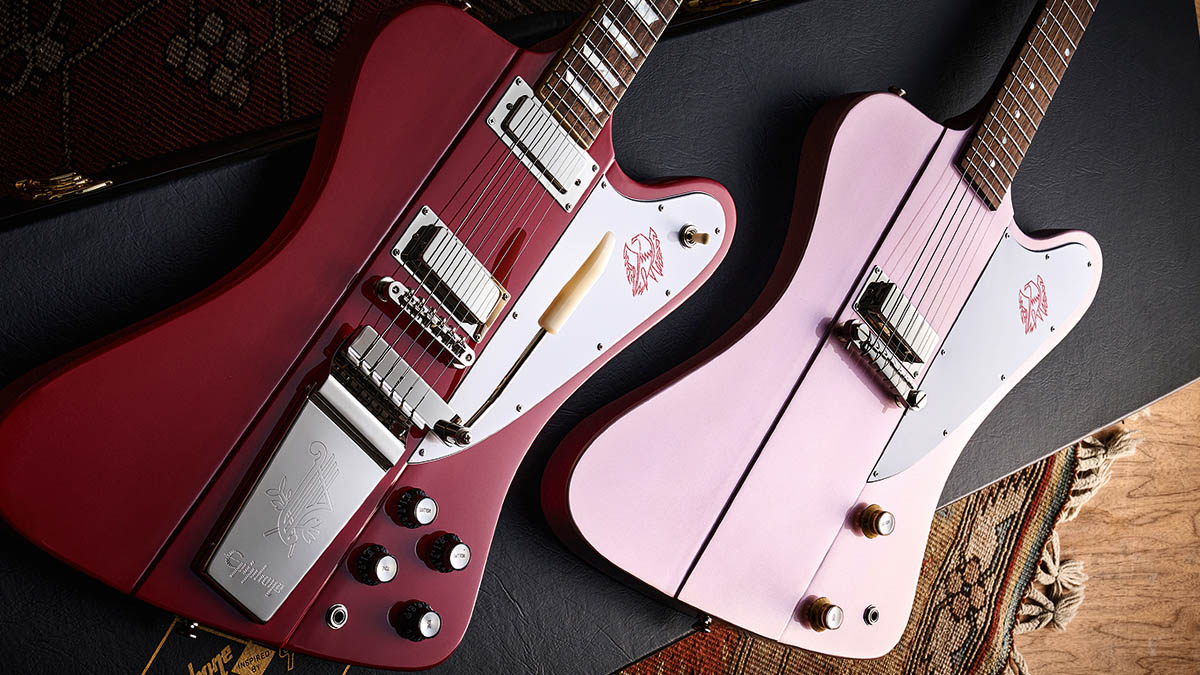
This reviewer recalls hearing Cream’s live version of the blues classic Sitting On Top Of The World on the band’s Goodbye album very well. Clapton spits out reams of notes with a huge distorted tone that it turns out was his 1964 sunburst Gibson Firebird I.
Just as memorable was first catching the infectious swagger of Johnny Winter’s Rock and Roll Hoochie Koo, most likely played on Johnny’s own 1964 Firebird, this time a white model V.
While Winter made a Firebird the main staple of his career, Clapton only stayed with his for the final Cream tour and on a few Blind Faith shows the following year. EC’s use of the Firebird inspired Gary Moore and Joe Bonamassa to purchase identical models, and it’s likely that many a Firebird lover took Winter’s fiery licks and slicing tone as inspiration. Gibson later produced limited-edition runs of both electric guitars.
We’ll spare you the full history lesson, but in the face of Fender’s success with its futuristic designs Gibson brought in auto industry designer Raymond Dietrich to see if his genius as a motor vehicle architect for brands such as Packard, Studebaker and Lincoln would transfer to the guitar.
Visually, it most certainly did, but commercially the result was more akin to Ford’s ill-fated Edsel model (not a Dietrich design). Even when Kalamazoo undertook a radical rethink of the Firebird in 1965, partly due to threats from Fender regarding headstock and body shape infringements, by 1969 the range had fizzled out.
Although Gibson has reintroduced the model in various guises over the years, with none in the current mainstream line-up (you’ll find some Murphy Lab ones but for mega bucks), it falls to Epiphone to fly the flag for this largely undersung guitar.
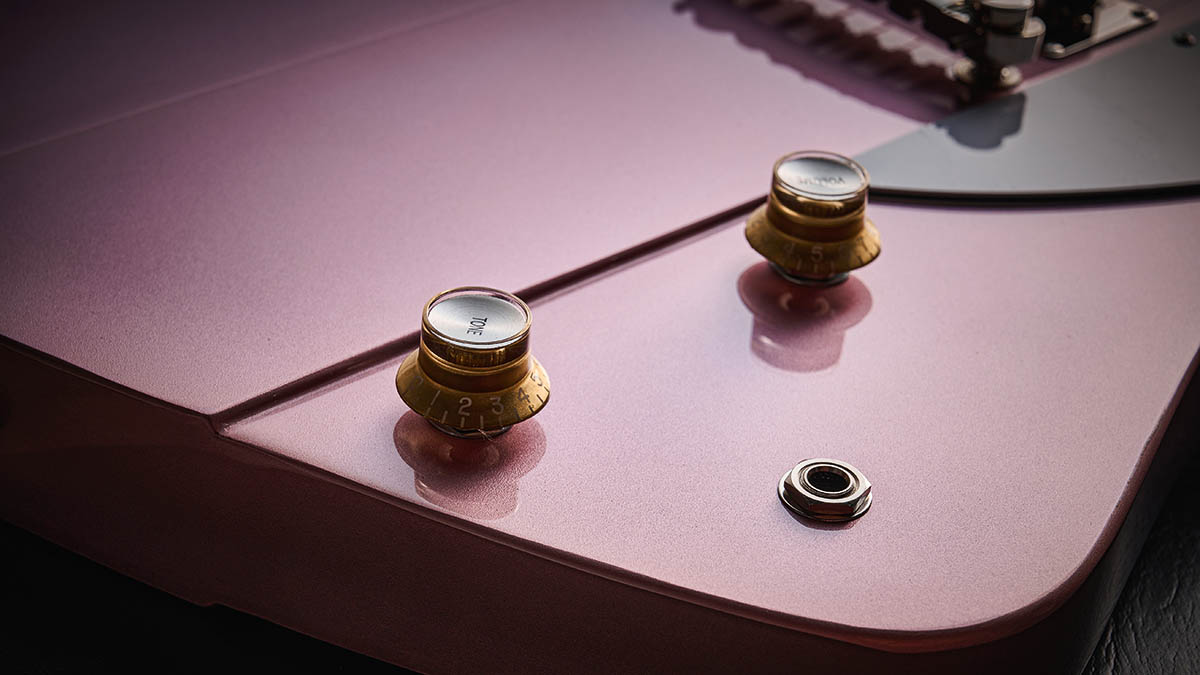
The Firebird I with its single bridge pickup and wrapover bridge would be one of the simplest guitars that Gibson ever made were it not for some highly unusual features. Like all reverse-body Firebirds it features a neck-through-body design with two body ‘wings’ glued into V-shaped recesses milled from each side of the body end of this nine-piece multi-laminate.
Using five mahogany lengths interspersed with four slim walnut strips for additional strength, it’s a complex build that also led to the model’s stepped body, onto which pickups and bridges are mounted.
It also means that the pickguard, with its natty Firebird emblem, butts neatly up to the step’s lower edge. On the base model the fingerboard was unbound rosewood with pearloid dots, and on our Chinese-built Epiphone it’s the same but using Indian laurel.
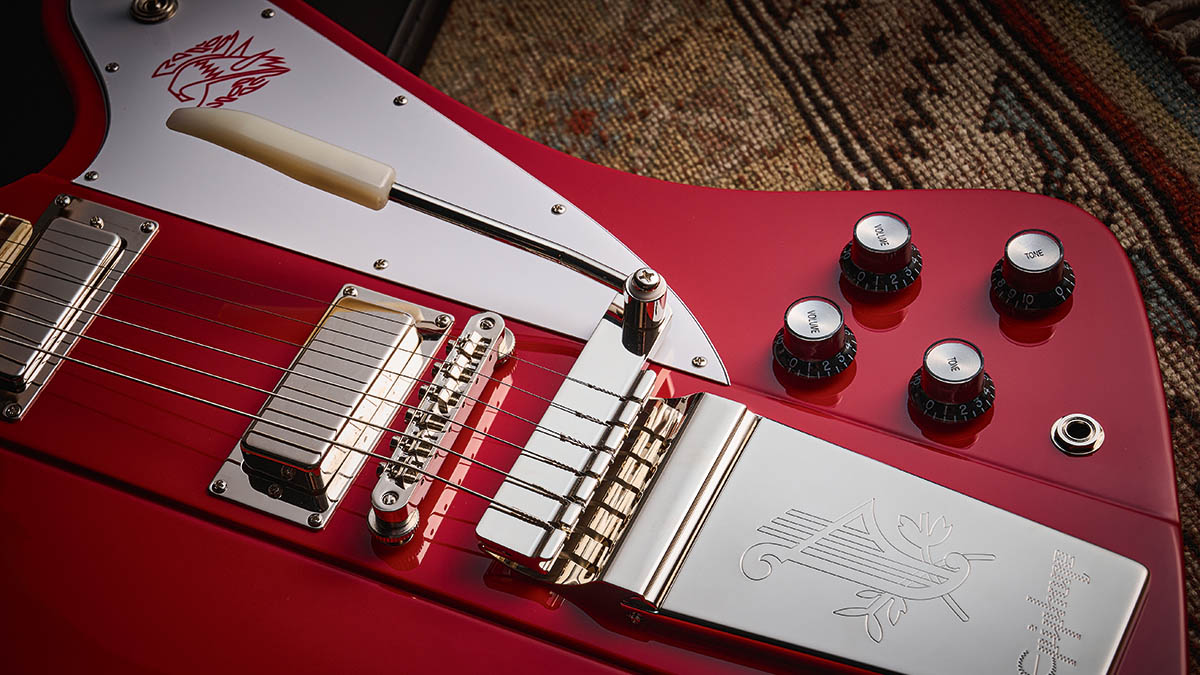
Firebird pickups buck the usual trend, too. Those fitted here are US-made Gibson Alnico V ’buckers, which, although appearing like regular mini-humbuckers but without adjustable polepieces, are actually quite different inside.
A Firebird pickup comprises a magnet set in the centre of each of the two bobbins with the windings effectively surrounding them, as opposed to the mini- or standard humbucker where a single magnet is centred underneath both coils. That’s it in a nutshell, and what it means for the guitar’s tone we’ll get to shortly.
The Firebird I’s bridge is the wrap-around ‘lightning bar’ style as found on various ’60s Gibsons. With its six raised compensated ridges it’s a fair compromise between an adjustable tune-o-matic and the more basic wrap-around of the Les Paul Junior.
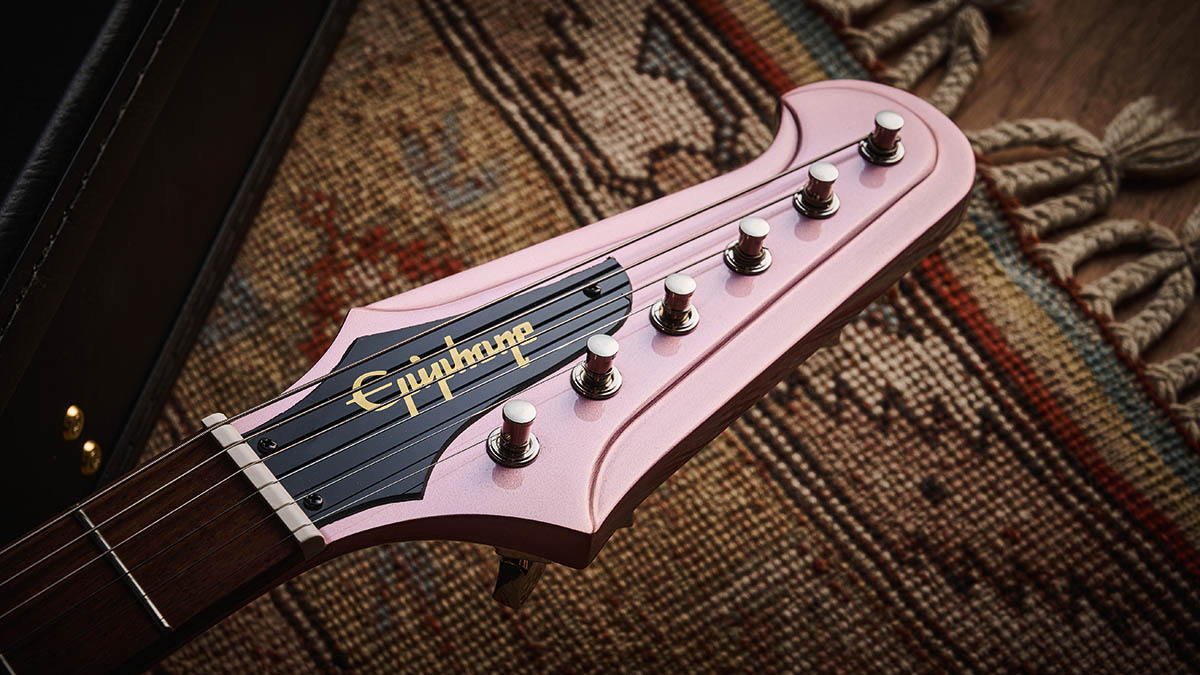
Which brings us to the tuners. Dietrich didn’t want a line of buttons sticking out to spoil his reverse Strat-style headstock design, so opted for Kluson’s rear-facing banjo machines instead.
This wasn’t a bad move from a practicality point of view, either, as it allowed easier access to the keys than would have been possible had the buttons been lined up facing the floor, as the reverse design might have implied. The downside is that they are huge and heavy, and on an already lengthy headstock the tendency when hanging on a strap is for the neck to dive.
Speaking of which, Firebirds have three strap buttons: one on the body end, one on the top shoulder, and one attached to the heel. Due to the body’s shape you can’t lean the guitar against an amp or it will tip over sideways, and we wouldn’t give great odds on the headstock surviving such a fall. A hanging stand, adjustable for height, is your best bet here.
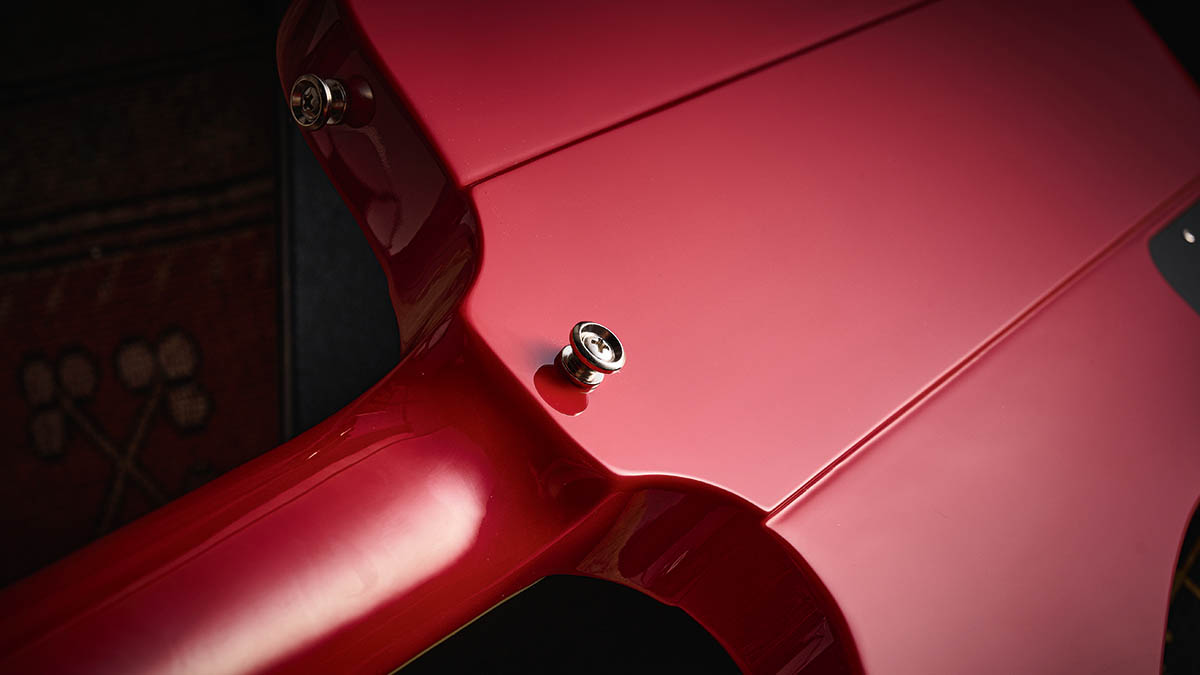
With single volume and tone pots, electronically the Firebird I is as basic as it gets. The components are all top quality, though, with CTS pots, a Sprague capacitor and Switchcraft jack.
And with all constructional aspects the same, bar the bound laurel fingerboard with trapeze inlays, it’s only the Firebird V’s long Maestro Vibrola with tune-o-matic bridge, plus an extra pickup with twin volume and tone pots, that distinguish the two guitars.
As with all Epiphones we’ve played recently it’s hard to fault the build and finish. The Heather Poly of our Firebird I packs a real statement, while the V’s Ember Red look is classy and timeless.
Feel & Sounds
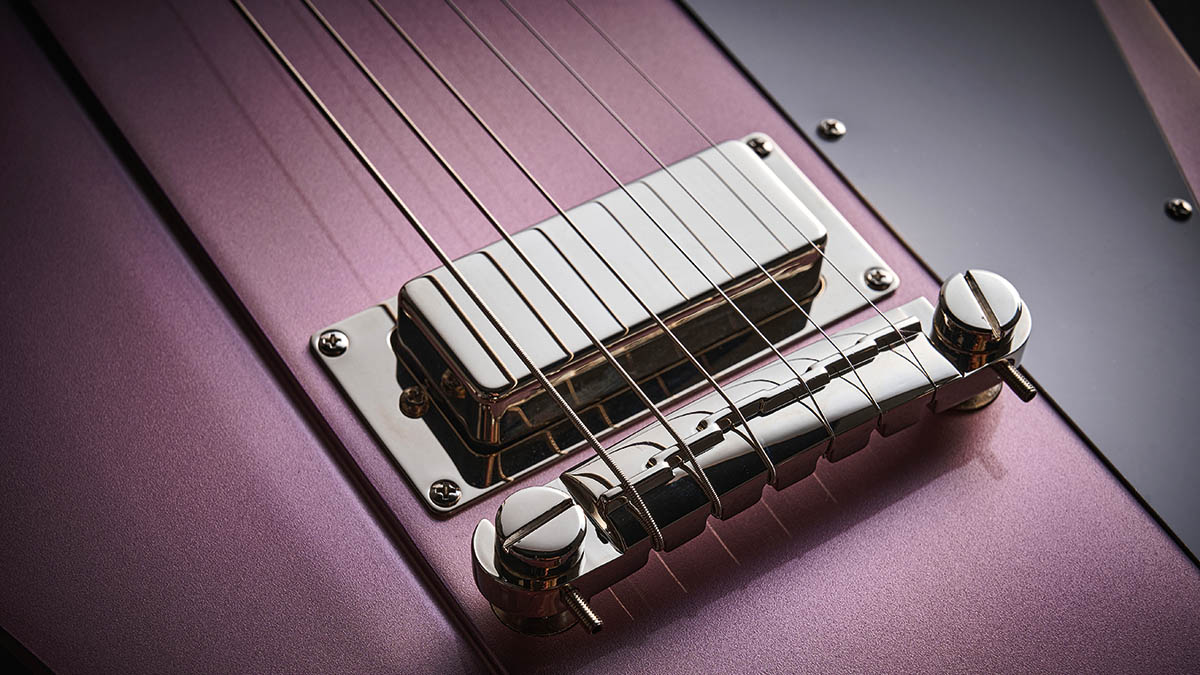
These are big guitars, and getting used to their playing geometry can take a while. With no top horn it feels like the entire fingerboard is at the player’s disposal, and despite the Firebird’s size and odd shape, sitting down to play, everything seems in the right place.
Due to its hefty Vibrola tailpiece, extra pickup and controls, the Firebird V is a weightier lump than its junior sibling. But this will certainly make it balance better on a strap.
Plugging the Firebird I into our Laney Lionheart 20-watt combo amp it’s immediately apparent that this dual-rail mini-humbucker breathes fire. Johnny Winter said he loved Firebirds because sonically they sit somewhere between Fender and Gibson, and our single-pickup model certainly has the vibe of an extra beefy Telecaster about it.
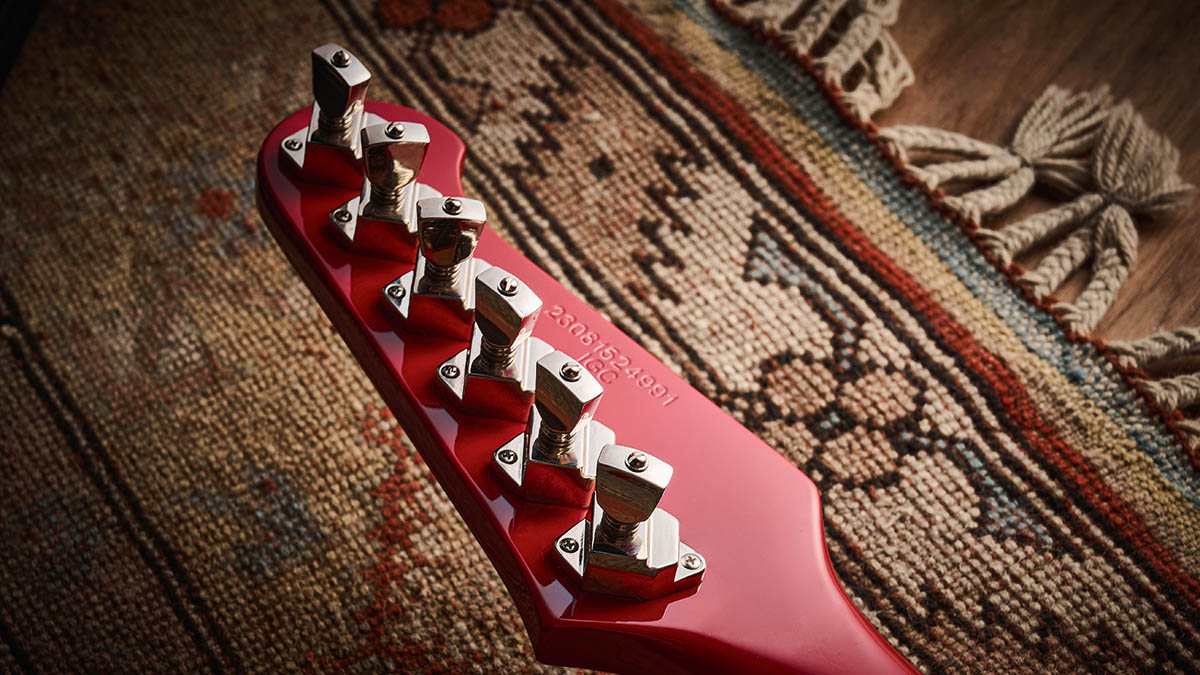
It snarls and seems to suit a driving tone that can be backed off to clean up. Also, the single tone control is your best friend for darkening the tone (which Clapton surely did on Sitting On Top of the World).
While the Maestro Vibrola has something of a reputation as a tone sucker, we spotted no evidence of that here on the Firebird V. The bridge pickup matched that of the Firebird I’s in size and tone, while the neck humbucker is not exactly Strat-y but certainly moving in that, or perhaps a DeArmond-loaded Gretsch’s, direction.
The ‘both pickups on’ setting provides clear and clanky sounds and, of course, everything can be sweetened up using the tone pots. Light waggles of the vibrato bar add pleasing dips to single notes and a lovely shimmer to chords.
Verdict
The recent joint ventures between Epiphone and Gibson’s Custom Shop have produced some stunning guitars of late, and this pair of Firebirds is right up there with the best.
Of course, what such collaborations also do is whack up the bottom line somewhat, and at $/£1,699 the Firebird V is closing in on Gibson’s own price points. We don’t think it’s unfair for what you get, which is some of our favourite instruments of late, and perhaps we’ll simply have to get used to it (ask yourself what you paid for half a pound of butter a year or two ago!).
They look fabulous, play really nicely right out of their huge leather-look black cases, and sound phenomenal
Aside from the pricing issue, however, there’s nothing we don’t love about these guitars. They look fabulous, play really nicely right out of their huge leather-look black cases, and sound phenomenal. Were we to play one live, though, we’d definitely fit strap locks and use the shoulder-mounted button to aid balance.
If it came to a choice? It’s tricky, as the Ember Red V is a fabulous beast, but for its unadulterated simplicity and staggeringly good looks, we’d opt for the Firebird I. Okay Ginger, “one, two, three…”
Specs
Epiphone Inspired By Gibson 1963 Firebird I
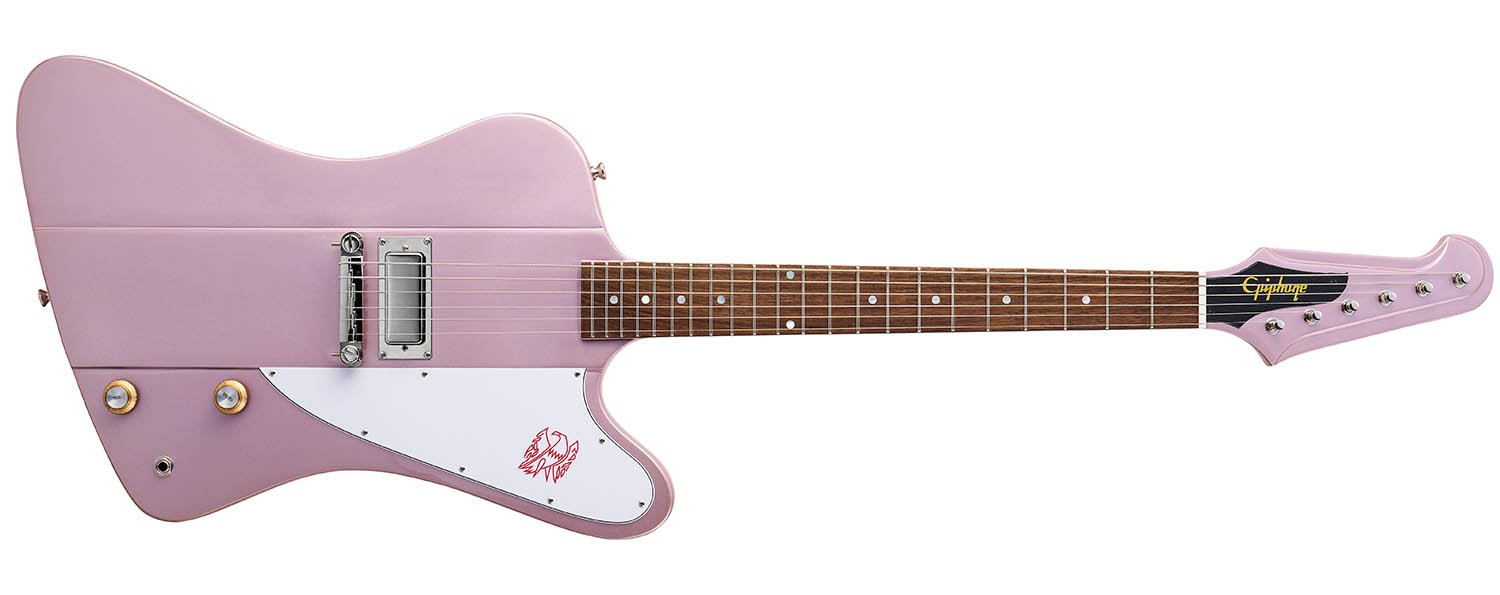
- PRICE: $1,299 / £1,349 (inc guitar case)
- ORIGIN: China
- TYPE: Reverse solidbody electric
- BODY: 2x ‘wings’ of solid mahogany
- NECK: Mahogany and walnut 9-piece laminate, neck-through-body design
- SCALE LENGTH: 628.65mm (24.75”)
- NUT/WIDTH: 43mm
- FINGERBOARD: Indian Laurel, 305mm (12”) radius, dot inlays
- FRETS: 22, medium jumbo
- HARDWARE: Wrap-around ‘lightning bar’ bridge/tailpiece, Kluson banjo-style Planetary rear-mounted tuners
- STRING SPACING, BRIDGE: 51.5mm
- ELECTRICS: 1x Alnico V Epiphone Firebird mini-humbucker, single volume and tone controls, CTS pots, Mallory capacitor, Switchcraft output jack
- WEIGHT (kg/lb): 3.4/7.5
- OPTIONS: No
- RANGE OPTIONS: Epiphone Inspired by Gibson Firebird V (as reviewed)
- LEFT-HANDERS: No
- FINISH: Heather Poly (as reviewed), Silver Mist, Inverness Green
Epiphone Inspired By Gibson 1963 Firebird V
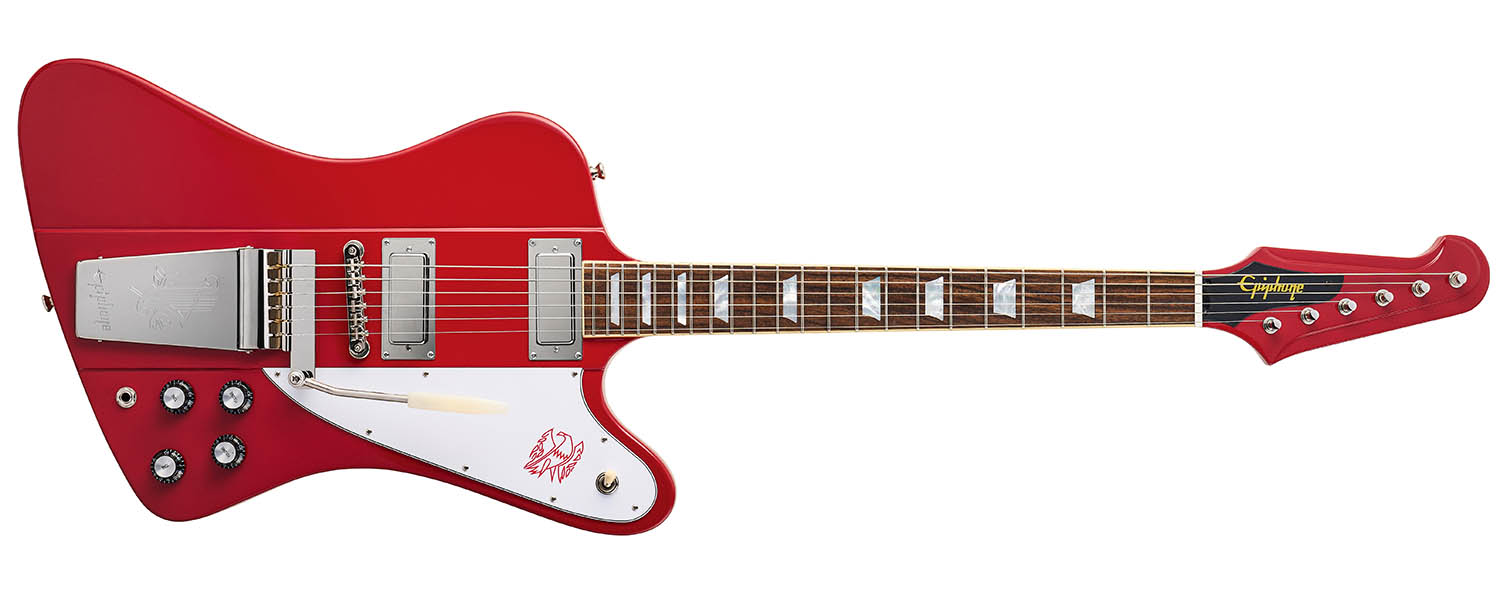
- PRICE: $/£1,699 (inc case)
- ORIGIN: China
- TYPE: Reverse solidbody electric
- BODY: 2x ‘wings’ of solid mahogany
- NECK: Mahogany and walnut 9-piece laminate, neck-through-body design
- SCALE LENGTH: 628.65mm (24.75”)
- NUT/WIDTH: 43mm
- FINGERBOARD: Bound Indian Laurel, 305mm (12”) radius, trapeze inlays
- FRETS: 22, medium jumbo
- HARDWARE: Epiphone ABR, Maestro Vibrola vibrato tailpiece, Kluson banjo-style Planetary rear‑mounted tuners
- STRING SPACING, BRIDGE: 51.5mm
- ELECTRICS: 2x Alnico V Epiphone Firebird mini-humbuckers, individual volume and tone controls, CTS pots, Mallory capacitors, Switchcraft output jack
- WEIGHT (kg/lb): 4.0/8.8
- OPTIONS: No
- RANGE OPTIONS: Epiphone Inspired by Gibson Firebird I (as reviewed)
- LEFT-HANDERS: No
- FINISH: Ember Red (as reviewed), Frost Blue
- CONTACT: Epiphone







